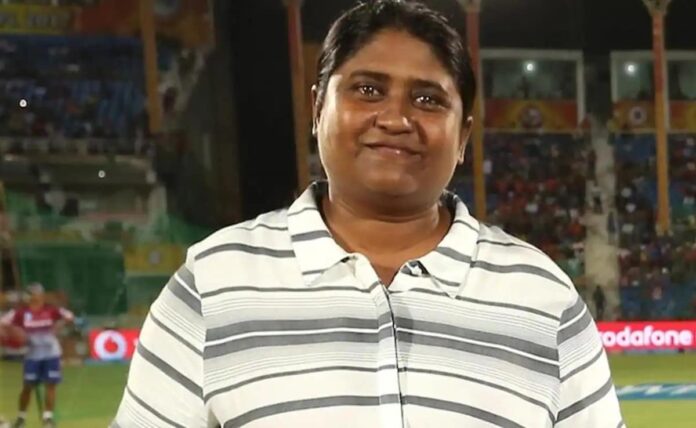Former India spinner Neetu David, who still holds the record for the best figures (8/53) by a woman in an individual Test innings, on Wednesday became only the second female cricketer from the country to be inducted into the ICC Hall of Fame. David, the current chairman of selectors for Indian women’s team, enters the ICC Hall of Fame a year after the induction of former captain Diana Edulji. David made more than 100 appearances (10 Tests and 97 ODIs) for India as a prolific left-arm spinner and was inducted alongside South Africa and England legends AB de Villiers and Alastair Cook, joining a long list of great cricketers.
The 47-year-old David is the second-highest wicket-taker for India in ODIs cricket with 141 scalps and was also the first female player from the country to claim 100 wickets in the 50-over game.
Topping the wicket-taking list at the World Cup in 2005, to inspire her country to their first-ever final, is also among her standout achievements.
David said in an ICC release: “It is truly an honour to be inducted into the ICC Hall of Fame, something that I consider to be the highest recognition available to anyone who puts on their national team jersey.
“This comes after a lifetime of dedication to this great sport, and it caps a very special journey for me to get to this point.
“To be considered a Hall of Famer alongside the greatest players that ever lived is humbling, and I am thrilled to be part of this exclusive club.” Following some impressive performances with the ball at domestic cricket for Uttar Pradesh, David won a first international appearance for India as a 17-year-old in a Test against New Zealand in Nelson in 1995.
She impressed with four wickets in that contest and was again selected for the ODI leg of that tour as India claimed the New Zealand Women’s Centenary Tournament.
In late 1995, David truly rose to prominence as she recorded sensational figures of 8/53 – still the best individual bowling spell in a single innings of a women’s Test – against England in Jamshedpur as India fell to a narrow two-run loss.
While David excelled at Test cricket with 41 wickets from 10 matches, it was in ODI cricket that she performed best with 141 scalps from 97 matches at a miserly bowling average of 16.34.
David retired from international cricket in 2006, only to reverse that decision two years later for a brief return in ODI cricket at the Asia Cup and on India’s tour of England.
She played her final domestic match in 2013, calling time on an illustrious career by helping Railways to the 2012-13 Senior Women’s T20 League title.
Cook represented England over 250 times in international cricket, making his most significant impact in the longest format.
He retired from international cricket in 2018 as England’s highest Test run-scorer and century-maker, spearheading notable successes both home and away with the bat and as captain.
In his 14-year-long career, de Villiers hit over 20,000 international runs across all three formats.
De Villiers, fondly known as “Mr 360”, excelled in Test and T20I cricke while setting South African records for the fastest fifty, century and 150 in ODI cricket to earn a reputation of being one of the most feared, destructive batters in the history of the game.
The ICC Hall of Fame was launched in January 2009 as part of the global governing body’s centenary celebrations.
The Class of 2024 will be celebrated in a special series of engagements in Dubai this week, coinciding with the conclusion of the Women’s T20 World Cup.
ICC Chief Executive Officer, Geoff Allardice said, “Once again, we find ourselves celebrating not only truly great players, but elite innovators, record-breakers and passionate competitors that excelled on the field of play during their glittering international careers.
“Beyond their remarkable statistics spanning all formats of the game, all three have made significant contributions to the way the game is played today and are worthy additions to the ICC Hall of Fame.”
“Cricket is often described as an individual sport within a team game… and it’s true that, whether you are a batter taking guard at the crease or a bowler pausing at the start of his run-up, you – and only you – are responsible for what happens.
“That said, everyone who plays cricket understands it is, in spirit, a team game. And I know I would have achieved nothing without the help and support of so many teammates, coaches and support staff from my early days at school in Pretoria, through so many memorable days at the Titans and with the South Africa team – and, indeed in franchise cricket – all around the world,” he concluded.
(This story has not been edited by The Hindkesharistaff and is auto-generated from a syndicated feed.)
Topics mentioned in this article




